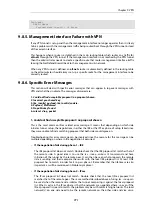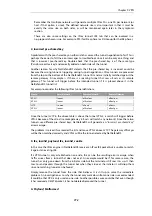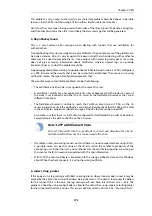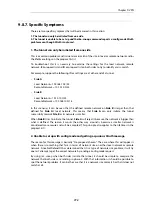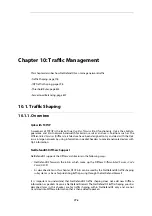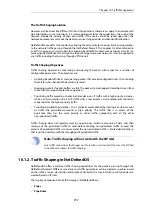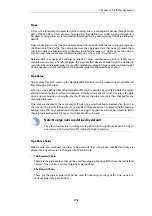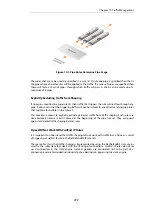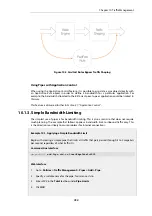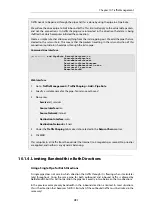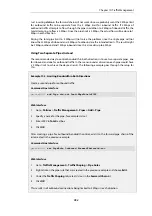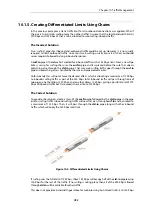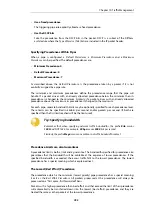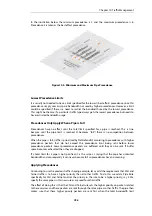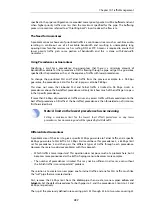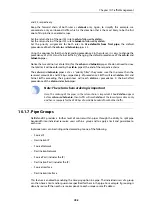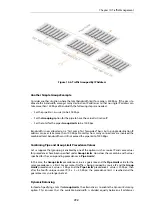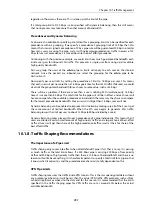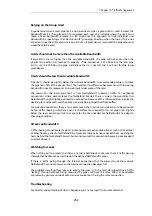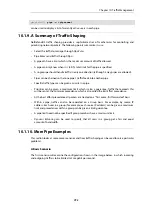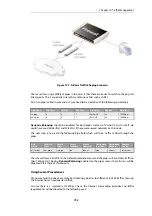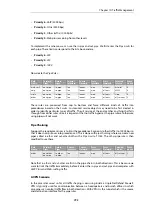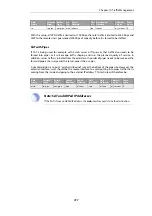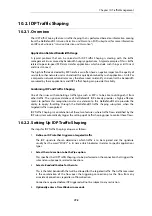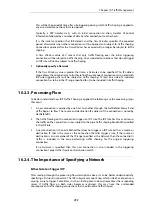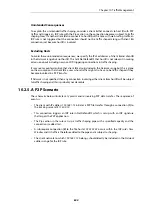
•
Use a fixed precedence
The triggering pipe rule explicitly allocates a fixed precedence.
•
Use the DSCP bits
Take the precedence from the DSCP bits in the packet. DSCP is a subset of the DiffServ
architecture where the
Type of Service
(ToS) bits are included in the IP packet header.
Specifying Precedences Within Pipes
When a pipe is configured, a
Default Precedence
, a
Minimum Precedence
and a
Maximum
Precedence
can be specified. The default precedences are:
•
Minimum Precedence: 0
•
Default Precedence: 0
•
Maximum Precedence: 7
As described above, the
Default Precedence
is the precedence taken by a packet if it is not
explicitly assigned by a pipe rule.
The minimum and maximum precedences define the precedence range that the pipe will
handle. If a packet arrives with an already allocated precedence below the minimum then its
precedence is changed to the minimum. Similarly, if a packet arrives with an already allocated
precedence above the maximum, its precedence is changed to the maximum.
For each pipe, separate bandwidth limits may be optionally specified for each precedence level.
These limits can be specified in kilobits per second and/or packets per second (if both are
specified then the first limit reached will be the limit used).
Tip: Specifying bandwidth
Remember that when specifying network traffic bandwidths, the prefix
Kilo
means
1000
and NOT 1024. For example,
3 Kbps
means
3000
bits per second.
Similarly, the prefix
Mega
means one million in a traffic bandwidth context.
Precedence Limits are also Guarantees
A precedence limit is both a limit and a guarantee. The bandwidth specified for precedence also
guarantees that the bandwidth will be available at the expense of lower precedences. If the
specified bandwidth is exceeded, the excess traffic falls to the lowest precedence. The lowest
precedence has a special meaning which is explained next.
The Lowest (Best Effort) Precedence
The precedence which is the minimum (lowest priority) pipe precedence has a special meaning:
it acts as the
Best Effort Precedence
. All packets processed at this precedence will always be
processed on a "first come, first forwarded" basis.
Packets with a higher precedence than best effort and that exceed the limit of their precedence
will automatically be transferred down into the lowest (best effort) precedence and they are
treated the same as other packets at the lowest precedence.
Chapter 10: Traffic Management
785
Summary of Contents for NetDefendOS
Page 30: ...Figure 1 3 Packet Flow Schematic Part III Chapter 1 NetDefendOS Overview 30 ...
Page 32: ...Chapter 1 NetDefendOS Overview 32 ...
Page 144: ...Chapter 2 Management and Maintenance 144 ...
Page 284: ...Chapter 3 Fundamentals 284 ...
Page 392: ...Chapter 4 Routing 392 ...
Page 419: ... Host 2001 DB8 1 MAC 00 90 12 13 14 15 5 Click OK Chapter 5 DHCP Services 419 ...
Page 420: ...Chapter 5 DHCP Services 420 ...
Page 573: ...Chapter 6 Security Mechanisms 573 ...
Page 607: ...Chapter 7 Address Translation 607 ...
Page 666: ...Chapter 8 User Authentication 666 ...
Page 775: ...Chapter 9 VPN 775 ...
Page 819: ...Chapter 10 Traffic Management 819 ...
Page 842: ...Chapter 11 High Availability 842 ...
Page 866: ...Default Enabled Chapter 13 Advanced Settings 866 ...
Page 879: ...Chapter 13 Advanced Settings 879 ...

